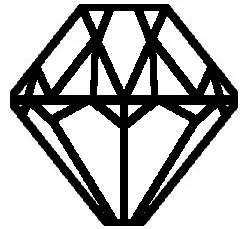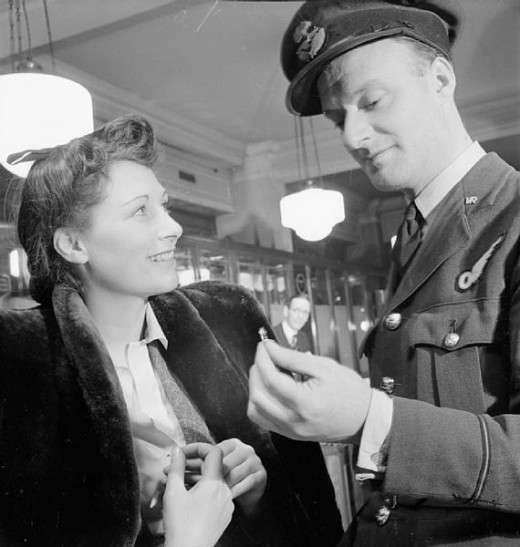
There’s just something about old vintage diamond wedding rings. Sometimes it feels like part of the essence or spirit of the previous owner still lives within it. This is especially true when the ring belonged to a close relative like a mother or grandmother.
Old Diamond Cuts
In order to understand some of the differences in the older diamond cuts, it’s important to understand some basic diamond anatomy and terminology.
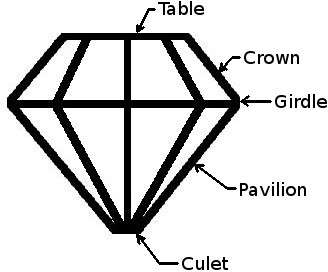
Anatomy of a Diamond
Table:
The table is the top flat portion of the diamond.
Girdle:
The girdle is the widest or the fattest part of the diamond.
Crown:
The crown is the top portion of the diamond that angles between the girdle and the table.
Pavilion:
The pavilion is the bottom portion of the diamond that slopes inward from the girdle. This portion of the diamond is the portion that reflects light back through the diamond.
Culet:
Sometimes the very bottom of the diamond where all the facets come together is cut off to help protect the point from being damaged. This was fairly common in some of the older diamond cuts.
Point Cut
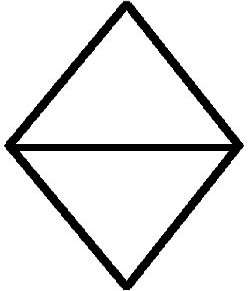
Point Cut
Cut during the early 1300s, the Point Cut is perhaps the simplest diamond cut. It looks somewhat like two pyramids joined together at the bottom.
Table Cut
The Point Cut was later improved by cutting off the top of the diamond to create a table. This cut is known as a Table Cut.
Mazarin Cut
The Mazarin Cut was introduced in the middle of the 17th Century.
Sometimes called Double-Cut Brilliants, the Mazarin cut has 17 facets on the crown.

Peruzzi Cut (Old Mine Cut)
One of the most popular vintage diamond cuts is what is known as the “Old Mine Cut”, sometimes known as the Triple Cut Brilliant.
The Old Mine Cut was the predecessor of today’s Round Brilliant Cut. Unlike the Round Brilliant Cut, the Old Mine Cut was more square with rounded corners in appearance or what is known as a Cushion Cut.
The Old Mine Cut was not cut to today’s precision standards. Consequently, the Old Mine Cut does not have the fire and brilliance of today’s modern diamond cuts.
The Old Mine Cut is characterized by a high crown, small table, deep pavilion, and large culet.
Due to the method in which these diamonds were cut they may have poor symmetry however they do have a beauty all their own reflective of the era they were created.
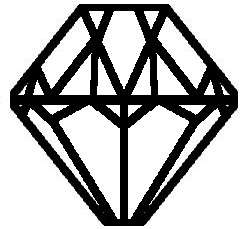
Old European Cut
Unlike the Old Mine Cut, the Old European Cut had a circular girdle similar to the modern Round Brilliant Cut of today’s diamonds. The Old European Cut had a smaller table creating a very tall diamond.
The Old European Cut was most popular in the late eighteenth century till the early twentieth century and was the predecessor of the Round Brilliant Cut.
Gemstones in Combination with Diamond in an Engagement Ring
If you would like to have a more unique look for your diamond engagement ring you may wish to choose a ring that has a colored gemstone as the main focal stone in the ring rather than a diamond.
One of the added advantages to having colored gemstones in your vintage engagement ring is that it is likely to be a natural gemstone because the ring was probably created before cost-effective laboratory gemstones could be produced.
Care should, however, be taken to make sure that the gemstone is genuine and not a simulant such as glass.
Another advantage that some colored gemstones have over diamonds is the durability of the gemstone.
While a diamond may be the hardest natural substance on earth, it’s not necessarily the most durable.
Gemstones such as Rubies and Sapphires (both are types of Corundum) are tougher because they don’t tend to fracture when they are hit against something hard. Diamond, on the other hand, may fracture and break if struck on a hard surface.
Vintage Engagement Rings Sapphire & Diamond Combination
If you’re looking for something very unique how about trying a sapphire and diamond combination.
Sapphire is an excellent choice for use in an engagement ring due to the durability of the gemstone.
Although sapphires are most commonly blue in color, there are many other colors available in natural sapphires.
Vintage Ruby & Diamond Engagement Rings
Ruby, the July birthstone has a wonderful red color that makes an excellent choice for use in engagement rings.
Like sapphire, rubies are made of corundum making them an extremely durable gemstone for use in engagement rings.
Other Gemstone & Diamond Combinations
Other natural gemstones to watch for if you are considering purchasing a vintage diamond engagement ring that has a colored gemstone(s) in it are:
- Alexandrite
- Aquamarine
- Chrysoberyl
- Emerald
- Garnet
- Iolite
- Morganite
- Spinel

